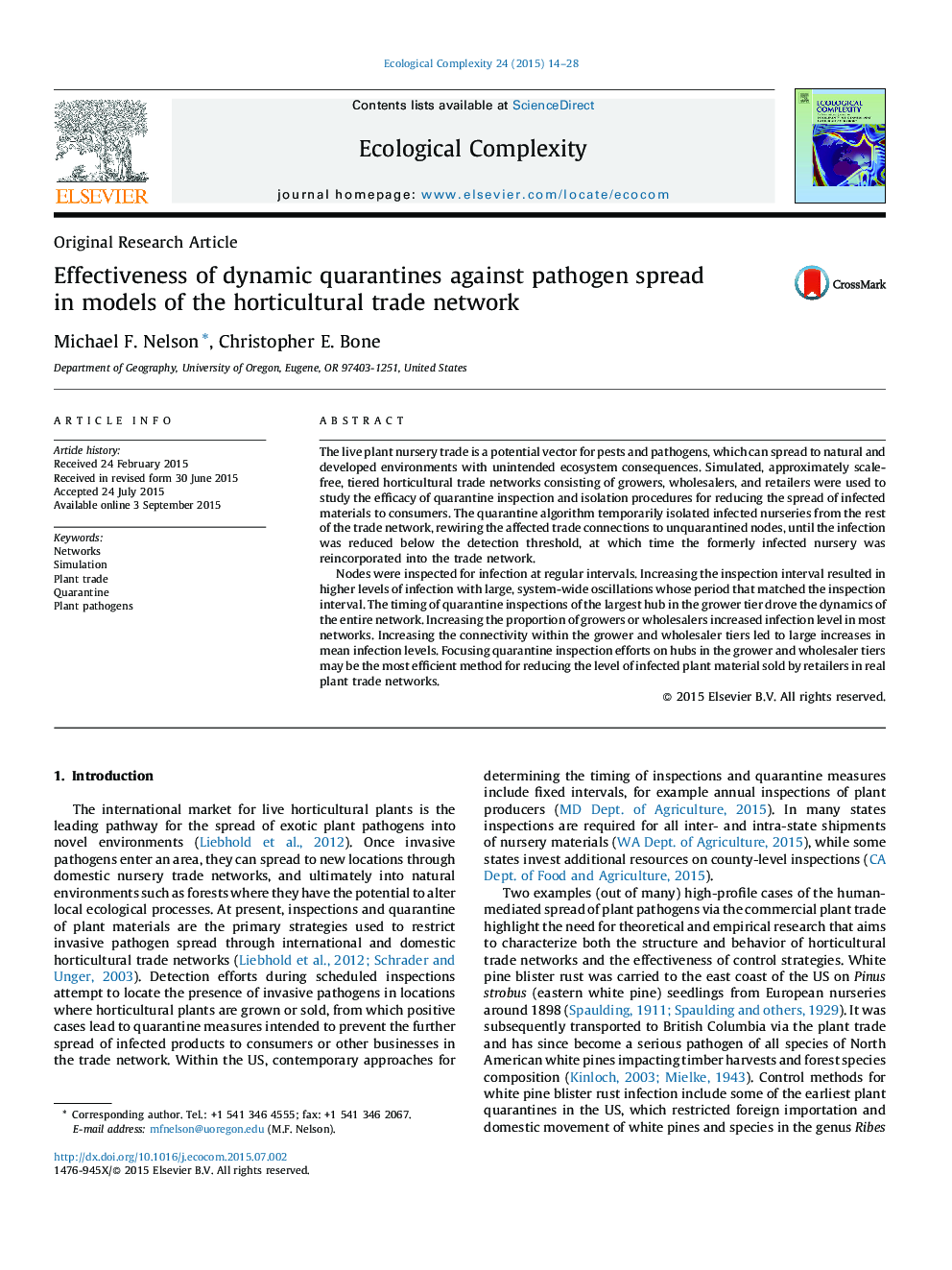| Article ID | Journal | Published Year | Pages | File Type |
|---|---|---|---|---|
| 4372424 | Ecological Complexity | 2015 | 15 Pages |
•Dynamic quarantine was simulated in models of horticultural trade networks.•Frequent quarantine inspections of tiers or hubs reduced epidemic size.•The largest grower hub drove the network dynamics.•Focusing quarantine efforts on grower hubs is most efficient.
The live plant nursery trade is a potential vector for pests and pathogens, which can spread to natural and developed environments with unintended ecosystem consequences. Simulated, approximately scale-free, tiered horticultural trade networks consisting of growers, wholesalers, and retailers were used to study the efficacy of quarantine inspection and isolation procedures for reducing the spread of infected materials to consumers. The quarantine algorithm temporarily isolated infected nurseries from the rest of the trade network, rewiring the affected trade connections to unquarantined nodes, until the infection was reduced below the detection threshold, at which time the formerly infected nursery was reincorporated into the trade network.Nodes were inspected for infection at regular intervals. Increasing the inspection interval resulted in higher levels of infection with large, system-wide oscillations whose period that matched the inspection interval. The timing of quarantine inspections of the largest hub in the grower tier drove the dynamics of the entire network. Increasing the proportion of growers or wholesalers increased infection level in most networks. Increasing the connectivity within the grower and wholesaler tiers led to large increases in mean infection levels. Focusing quarantine inspection efforts on hubs in the grower and wholesaler tiers may be the most efficient method for reducing the level of infected plant material sold by retailers in real plant trade networks.
